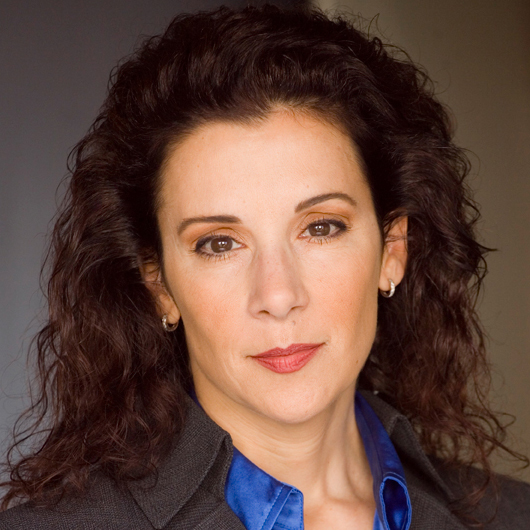For the industry to bring about real change when it comes to on-screen representation, Geena Davis Institute (GDI) on Gender in Media CEO Madeline Di Nonno urges creatives to take an intersectional lens when reviewing scripts, considering all characters that contribute to a story.
The executive believes it vital filmmakers examine their own unconscious bias, and make diversity – even when it feels like should be implicit – explicit on the page. For instance, when describing a crowd scene, you’d write: “A crowd gathers, which is half female.”
“It has to be explicit in the script, otherwise it doesn’t happen,” Di Nonno tells IF.
Founded in 2004 by Davis, the GDI is a research-driven advocacy organisation working to create gender balance, foster inclusion and impede bias and stereotyping in family entertainment media. At last year’s Emmys, it was presented with the Governor’s Award for its efforts.
In 2019, the institute developed tool Spellcheck for Bias in partnership with the University of Southern California, which uses AI to determine the representation of and percentage of dialogue from six identities in screenplays: gender, race/ethnicity, LGBTQIA+, disability, age 50+, and body type. The idea is the tool – piloted with Disney and NBCUniversal – can highlight opportunities for more balanced representation.
“We’ll simply look: Is a character being described? If they are, how are they being described? If a character’s not being described and they’re contributing dialogue, could that be an opportunity to infuse more diversity and inclusion in a script without interrupting the authentic story?” Di Nonno says.
However, whether industry is using GDI’s tool or not, the CEO urges filmmakers to put a diversity and inclusion lens on their scripts and see where there’s opportunities, through simply a “keystroke”, to boost representation authentically.
“The other thing we have to think about, is one character can be disabled, an adult 50+, part of the LGBTQ community, and a person of colour. You could have all of that embodied in one character,” she says.
Anyone can make these changes, but Di Nonno argues who is working behind the lens is also significant, given creatives so often draw from their own lived experiences.
“We have seen and been able to track that when there has been a female writer or director, there’s been a 7-10 per cent increase of on screen roles [for women] as a result of them driving the story. So there is a correlation, definitely, in terms of who’s the creator and then what happens on screen.”

Di Nonno will join Geena Davis and a host of Australian creatives today at ACMI’s Being Seen on Screen conference, with the GDI a presenting partner. The conference tackles gender representation and diversity on screen through key lenses of body image, ageing and diversity, with a special focus on local content.
At the beginning of the day, Di Nonno will speak on panel Setting the Scene, where she will discuss with Screen Australia Gender Matters taskforce members, NITV acquisitions manager Anusha Duray and RMIT Dean of the School of Media and Communications Lisa French, the lay of the land for women on screen and behind the camera in Australia.
Later in the day, she’ll discuss with Sigrid Thornton, director Sophie Hyde and casting director Anousha Zarkesh how they give voice and advocate for older female characters in session Aging on Screen.
On the latter, recent research by the GDI found that in US children’s TV content, adults over 50 made up only 2.5 per cent of characters, despite making up 36 per cent of the population.
“There’s not a lot of opportunity for older actors and for older female characters… Over the years, we’ve done a number of different studies and we’ve always found the female characters are frail, frumpy or feeble. They’re shown as being domesticated; they’re always inside. They’re shown as not being physically active, not having a romantic life, and as always beholden to someone else, taking care of them,” Di Nonno says.
“Clearly, when you look at the real world of adults 50+, we’re living longer than ever and we’re having full lives at that age. And it’s just not being reflected in the fictional content that we’re we’re seeing.”
The conference will also examine bodies on screen in a session with writer, speaker and appearance activist Carly Findlay; Australian of the Year and body image advocate Taryn Brumfitt; actor, model, host and BLM, queer and radical body acceptance advocate Milo Hartill and filmmaker and disability advocate Amy Marks.
GDI has done studies into body types on screen, with recent research finding that while people with larger body types make up 42 per cent of the US population, they make up only 4 per cent of fictional characters.
“There is a lot of discrimination for characters that are larger body type. They’re usually the brunt of the joke. They’re always seen as being out of breath, and not physically fit. There’s a lot of improvement that really needs to be made when it comes to that,” Di Nonno says.
This year, GDI has a number of studies to be released, including one examining the portrayal of caregiving in the US, and an update of its research into the STEM characters in TV. On the latter, GDI is a partner in #GirlsLeadSTEM, a consortium that campaigns to spotlight girls and women in STEM in the US, and to engage girls to consider STEM for education and careers.
As for future research initiatives, Nonno would love to work with Australian organisations to look at on screen representation here.
“We are very global and it all comes down to the funding. We would be delighted to receive funding from the Australian Government or any of the entities to partner on research and study. We’ve worked around the globe with UNICEF, Lego and Cannes Lion, so we have an abundance of global research, but it always comes down to the funding sources.”



